Related Research Articles

The Bad and the Beautiful is a 1952 American melodrama that tells the story of a film producer who alienates everyone around him. The film was directed by Vincente Minnelli, written by George Bradshaw and Charles Schnee, and stars Lana Turner, Kirk Douglas, Walter Pidgeon, Dick Powell, Barry Sullivan, Gloria Grahame and Gilbert Roland. The Bad and the Beautiful won five Academy Awards out of six nominations in 1952, a record for the most awards for a movie that was not nominated for Best Picture or for Best Director.
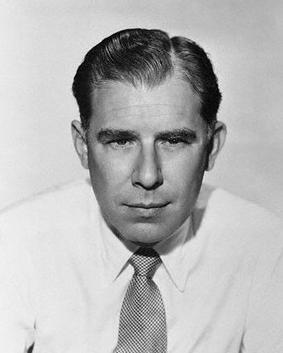
George Seaton was an American screenwriter, playwright, film director and producer, and theatre director.
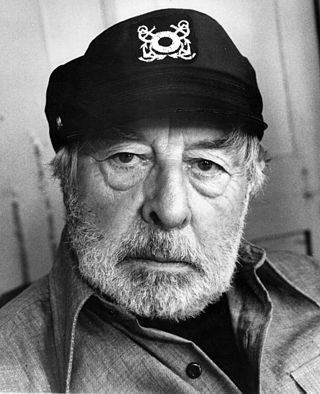
John Houseman was a Romanian-born British-American actor and producer of theatre, film, and television. He became known for his highly publicized collaboration with director Orson Welles from their days in the Federal Theatre Project through to the production of Citizen Kane and his collaboration, as producer of The Blue Dahlia, with writer Raymond Chandler on the screenplay. He won the Academy Award for Best Supporting Actor for his portrayal of Professor Charles W. Kingsfield in the 1973 film The Paper Chase. He reprised the role of Kingsfield in the 1978 television series adaptation.
Isadore "Dore" Schary was an American playwright, director, and producer for the stage and a prolific screenwriter and producer of motion pictures. He directed one feature film, Act One, the film biography of his friend, playwright and theater director Moss Hart. He became head of production at Metro-Goldwyn-Mayer and replaced Louis B. Mayer as president of the studio in 1951.

Edward Dmytryk was a Canadian-born American film director and editor. He was known for his 1940s noir films and received an Oscar nomination for Best Director for Crossfire (1947). In 1947, he was named as one of the Hollywood Ten, a group of blacklisted film industry professionals who refused to testify to the House Un-American Activities Committee (HUAC) in their investigations during the McCarthy-era Red Scare. They all served time in prison for contempt of Congress. In 1951, however, Dmytryk testified to the HUAC and named individuals, including Arnold Manoff, whose careers were then destroyed for many years, to rehabilitate his own career. First hired again by independent producer Stanley Kramer in 1952, Dmytryk is likely best known for directing The Caine Mutiny (1954), a critical and commercial success. The second-highest-grossing film of the year, it was nominated for Best Picture and several other awards at the 1955 Oscars. Dmytryk was nominated for a Directors Guild Award for Outstanding Directorial Achievement in Motion Pictures.
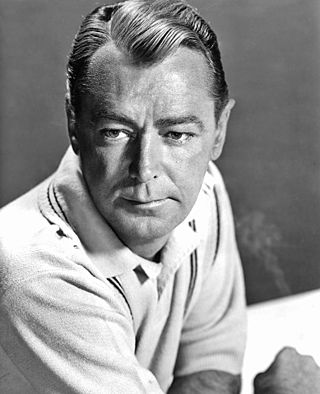
Alan Walbridge Ladd was an American actor and film producer. Ladd found success in film in the 1940s and early 1950s, particularly in films noir and Westerns. He was often paired with Veronica Lake in films noir, such as This Gun for Hire (1942), The Glass Key (1942), and The Blue Dahlia (1946). Whispering Smith (1948) was his first Western and color film, and Shane (1953) was noted for its contributions to the genre. Ladd also appeared in ten films with William Bendix; both actors coincidentally died in 1964.

Robert Bushnell Ryan was an American actor and activist. Known for his portrayals of hardened cops and ruthless villains, Ryan performed for over three decades. He was nominated for the Academy Award for Best Supporting Actor for his role in the film noir drama Crossfire (1947).
John Lee Mahin was an American screenwriter and producer of films who was active in Hollywood from the 1930s to the 1960s. He was known as the favorite writer of Clark Gable and Victor Fleming. In the words of one profile, he had "a flair for rousing adventure material, and at the same time he wrote some of the raciest and most sophisticated sexual comedies of that period."
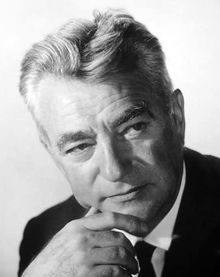
Charles Vidor was a Hungarian film director. Among his film successes are The Bridge (1929), The Tuttles of Tahiti (1942), The Desperadoes (1943), Cover Girl (1944), Together Again (1944), A Song to Remember (1945), Over 21 (1945), Gilda (1946), The Loves of Carmen (1948), Rhapsody (1954), Love Me or Leave Me (1955), The Swan (1956), The Joker Is Wild (1957), and A Farewell to Arms (1957).
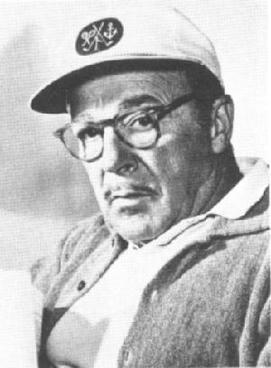
Gordon Douglas Brickner was an American film director and actor, who directed many different genres of films over the course of a five-decade career in motion pictures.

Charles John "Tim" Holt III was an American actor. He was a popular Western star during the 1940s and early 1950s, appearing in forty-six B westerns released by RKO Pictures.

John Lund was an American film, stage, and radio actor who is probably best remembered for his role in the film A Foreign Affair (1948) and a dual role in To Each His Own (1946).
John Paxton was an American screenwriter.
Borden Chase was an American writer.
Norman Krasna was an American screenwriter, playwright, producer, and film director who penned screwball comedies centered on a case of mistaken identity. Krasna directed three films during a forty-year career in Hollywood. He garnered four Academy Award screenwriting nominations, winning once for 1943's Princess O'Rourke, which he also directed.
Leonard Spigelgass was an American film producer and screenwriter.
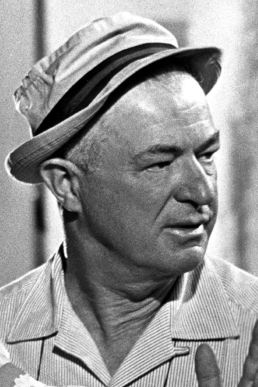
Naftuli Hertz "Nathan" Juran was an Austrian-born film art director, and later film and television director. As an art director, he won the Oscar for Best Art Direction in 1942 for How Green Was My Valley, along with Richard Day and Thomas Little. His work on The Razor's Edge in 1946 also received an Academy nomination. In the 1950s, he began to direct, and was known for science fiction and fantasy films such as Attack of the 50 Foot Woman. He was also the brother of quality guru Joseph M. Juran.
Aeneas MacKenzie, or Æneas MacKenzie, was a Scottish-American screenwriter. MacKenzie wrote many notable Hollywood films, including: The Private Lives of Elizabeth and Essex (1939), They Died with Their Boots On (1941), Ivanhoe (1952), and The Ten Commandments (1956).

Easy Living is a 1949 American drama film directed by Jacques Tourneur, starring Victor Mature, Lucille Ball and Lizabeth Scott. The film features the real-life Los Angeles Rams football team.
Earl Felton (1909–1972) was an American screenwriter.
References
- 1 2 "CHARLES SCHNEE, WROTE FOR FILMS" (November 30, 1962). The New York Times
- ↑ (December 9, 1946). "'ANGEL FACE' LISTED FOR MISS GODDARD" The New York Times
- ↑ By THOMAS F BRADY (January 3, 1949). "METRO LISTS CAST FOR JOHNSON FILM". The New York Times
- ↑ By THOMAS F BRADY (June 1, 1949). "ROBERT RYAN GETS LEAD IN RKO FILM". The New York Times
- ↑ By THOMAS F BRADY (August 5, 1949). "DICK POWELL GETS NEW METRO ROLE". The New York Times
- ↑ "Fairbanks Will Make Episode Film; Schary Boosts Young Producers" Schallert, Edwin. Los Angeles Times 30 January 1952: A7.
- ↑ "Mr. film noir stays at the table" Silver, Alain. Film Comment; New York Vol. 8, Iss. 1, (Spring 1972): 14–23.
- 1 2 "Disband Schnee Unit". Variety . September 16, 1953. p. 2. Retrieved October 6, 2019– via Archive.org.
- ↑ Bad Day At Black Rock at the American Film Institute Catalog
- ↑ Pryor, Thomas M. (12 September 1954). "HOLLYWOOD CYCLE: Five Films on Biblical Subjects Keep Industry Wheels Turning -- Addenda". The New York Times. p. X5.
- ↑ Schallert, E. (August 13, 1956). "Angeli, Newman may be reteamed; Japanese boy gets stellar role." Los Angeles Times
- ↑ (August 19, 1957). "FILM ROLE GIVEN TO CYD CHARISSE". The New York Times
- ↑ Hopper, H. (February 27, 1957). "O'Brian will star in civil war story" Los Angeles Times Retrieved from
- ↑ By THOMAS M PRYOR (October 4, 1957). "SCHNEE TO FILM 'TIGER AMONG US'" The New York Times
- ↑ "FILM EVENTS". (March 14, 1958). Los Angeles Times
- ↑ By OSCAR GODBOUT (August 21, 1958). "GABLE MAY STAR IN 'IMAGE MAKERS'" The New York Times
- ↑ (May 21, 1958). "From Hollywood" The New York Times
- ↑ "Los Angeles Evening Citizen News from Hollywood, California on January 18, 1962 · 10". Newspapers.com. Retrieved 2021-05-29.
- ↑ "Charles Schnee, film writer, producer, dies" (November 30, 1962). Los Angeles Times